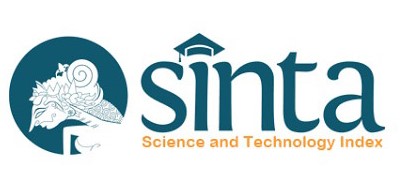Management of Local Anesthetics Systemic Toxicity In A 78 Year Old Man Undergoing Remove Of Inplate
Abstract
Background: Local anesthetics have been widely used over the past 50 years in many clinical practices, ranging from emergency departments to operating rooms. Local anesthetics systemic toxicity (LAST) is a life-threatening condition when the effects of local anesthetics reach the systemic circulation with an incidence of 0.03% or 0.27 incidence of 1000 episodes of Peripheral nerve block (PNB).
Case: We report a 78-year-old male who underwent of remove of inplate (ROI) and open reduction internal fixation (ORIF) reconstruction. Preoperative physical examination revealed GCS E4V5M6, blood pressure 195/76, other vital signs within normal limits, SpO2 99% in the supine position. On examination of the lungs, there were increased bronchial breath sounds and rough crackles, especially in the 2-5 left intercostal space. Other physical and laboratory examinations were within normal limits. The patient was hemodynamically stable after infusion lipid emulsion. The main principle of LAST management is to ensure adequate ventilation and organ perfusion with sufficient oxygen-rich blood to reach the brain, heart, and kidneys to prevent acidosis until lipid emulsion therapy.
Conclusion: LAST management requires prompt and precise diagnosis and treatment to get a good outcome.
Keywords
Full Text:
PDFReferences
Hasan B, Asif T, Hasan M. Lidocaine-Induced Systemic Toxicity: A Case Report and Review of Literature. Cureus. 2017;9(5):1275. doi:10.7759/cureus.1275
Gitman M, Fettiplace M, Weinberg G. Local Anesthetic Systemic Toxicity. In: Hadzic’s Textbook of Regional Anesthesia and Acute Pain Management. 2nd ed. China: McGraw-Hill Education; 2017.
Chang A, Dua A, Singh K, White BA. Peripheral Nerve Blocks. StatPearls [Internet].; 2020. https://www.ncbi.nlm.nih.gov/books/NBK459210/
Jankovic D, Peng P. Regional Nerve Blocks in Anesthesia and Pain Therapy-Traditional and Ultrasound-Guided Techniques. 4th ed. Switzerland: Springer; 2015.
El-Boghdadly K, Pawa A, Chin KJ. Local anesthetic systemic toxicity: current perspectives. Local Reg Anesth. 2018;11:35-44. doi:10.2147/LRA.S154512
Auyong DB, Yuan SC, Choi DS, Pahang JA, Slee AE, Hanson NA. A Double-Blind Randomized Comparison of Continuous Interscalene, Supraclavicular, and Suprascapular Blocks for Total Shoulder Arthroplasty. Reg Anesth Pain Med. 2017;42(3):302-309. doi:10.1097/AAP.0000000000000578
Butterworth IV JF, Mackey DC, Wasnick JD. Morgan & Mikhail’s Clinical Anesthesiology. 6th ed. United States: McGraw-Hill Education; 2018.
Joseph Makram Botros ML boulos. Comparative study between a combination of lidocaine and levobupivacaine and that of lidocaine, levobupivacaine, and dexmedetomidine during peribulbar anesthesia for phacoemulsifi cation cataract surgery. Ain-Shams Journal of Anesthesiology. 2017;10(1):224-229. doi:10.4103/1687-7934.238462
Ok SH, Hong JM, Lee SH, Sohn JT. Lipid emulsion for treating local anesthetic systemic toxicity. Int J Med Sci. 2018;15(7):713-722. doi:10.7150/ijms.22643.
Kien NT, Giang NT, Manh B van. Successful intralipid-emulsion treatment of local anesthetic systemic toxicity following ultrasound-guided brachial plexus block: case report. Int Med Case Rep J . 2019;28(12):193-197. doi:10.2147/IMCRJ.S207317
Sepulveda EA, Pak A. Lipid Emulsion Therapy. StatPearls [Internet]; 2020. https://www.ncbi.nlm.nih.gov/books/NBK549897/
DOI: http://dx.doi.org/10.21776/ub.jap.2021.002.03.05
Refbacks
- There are currently no refbacks.

This work is licensed under a Creative Commons Attribution 4.0 International License.









.png)

